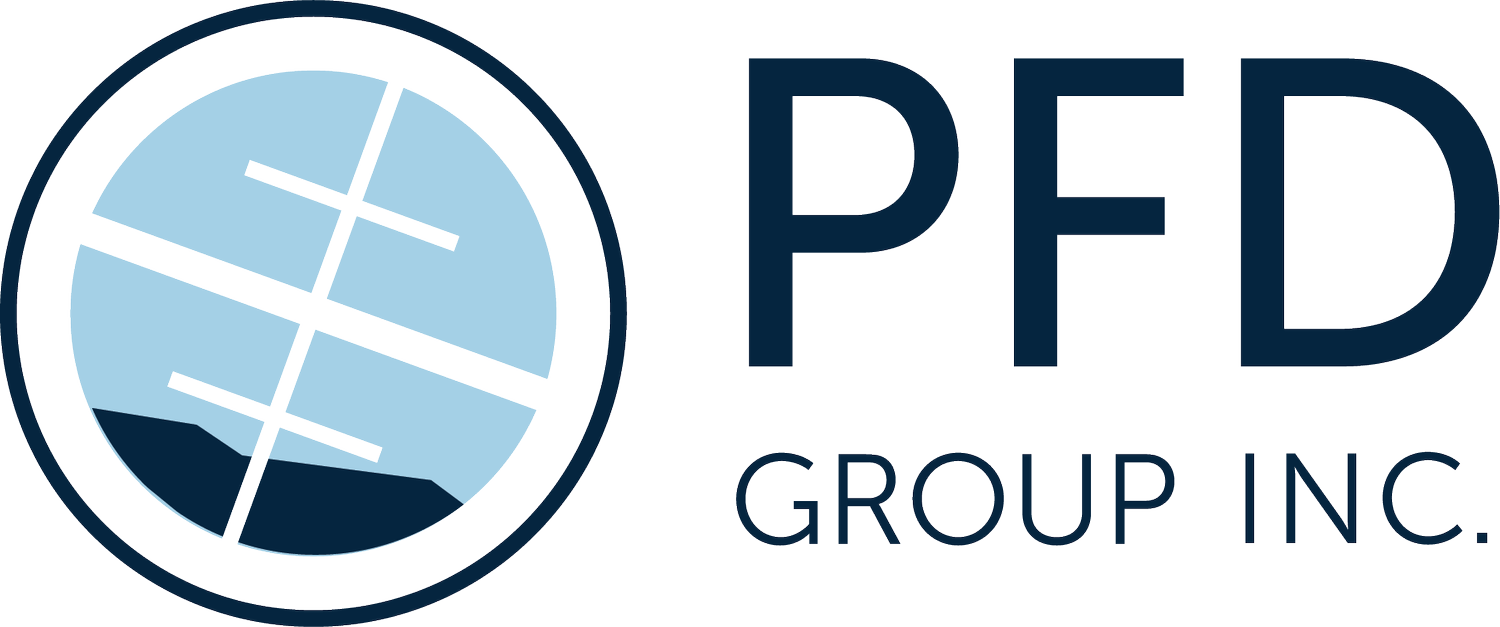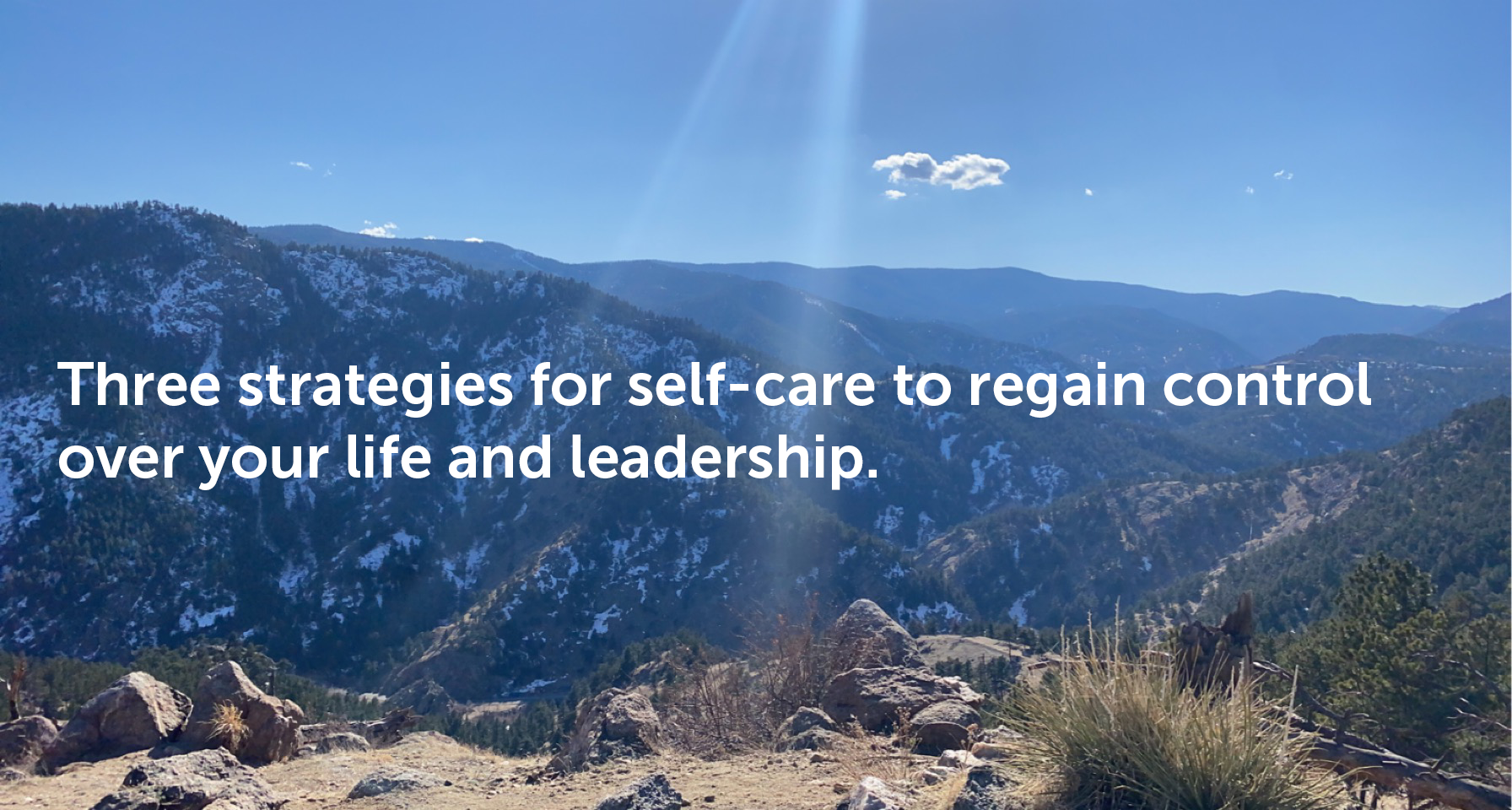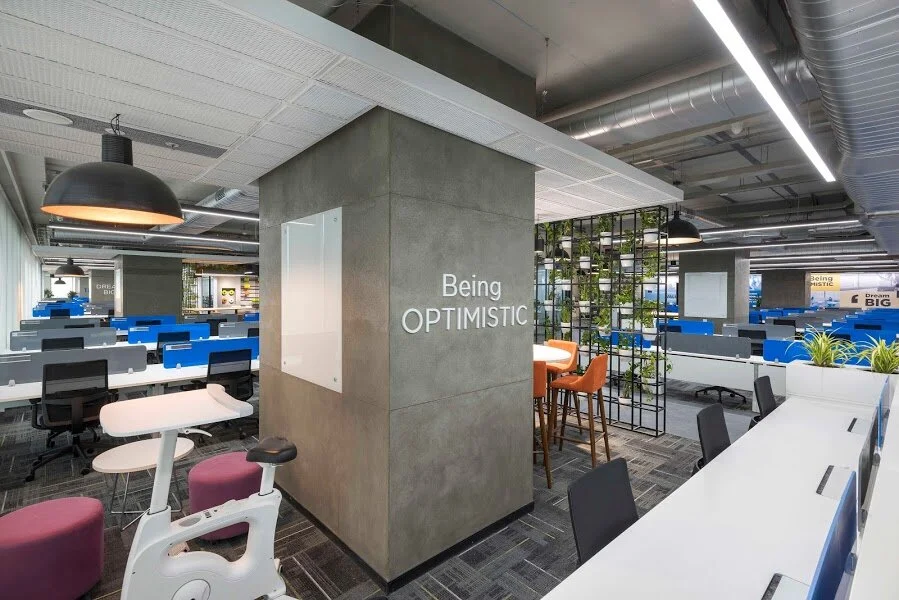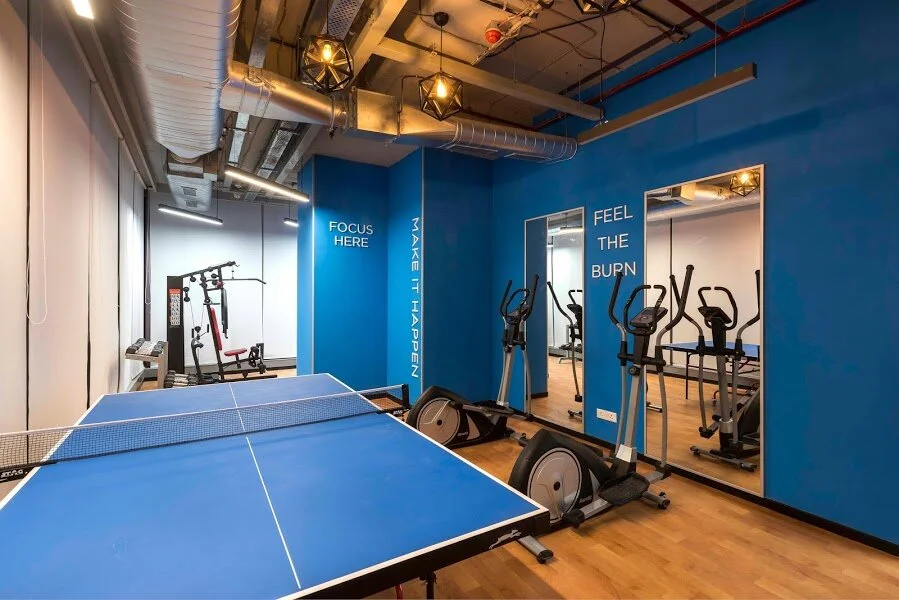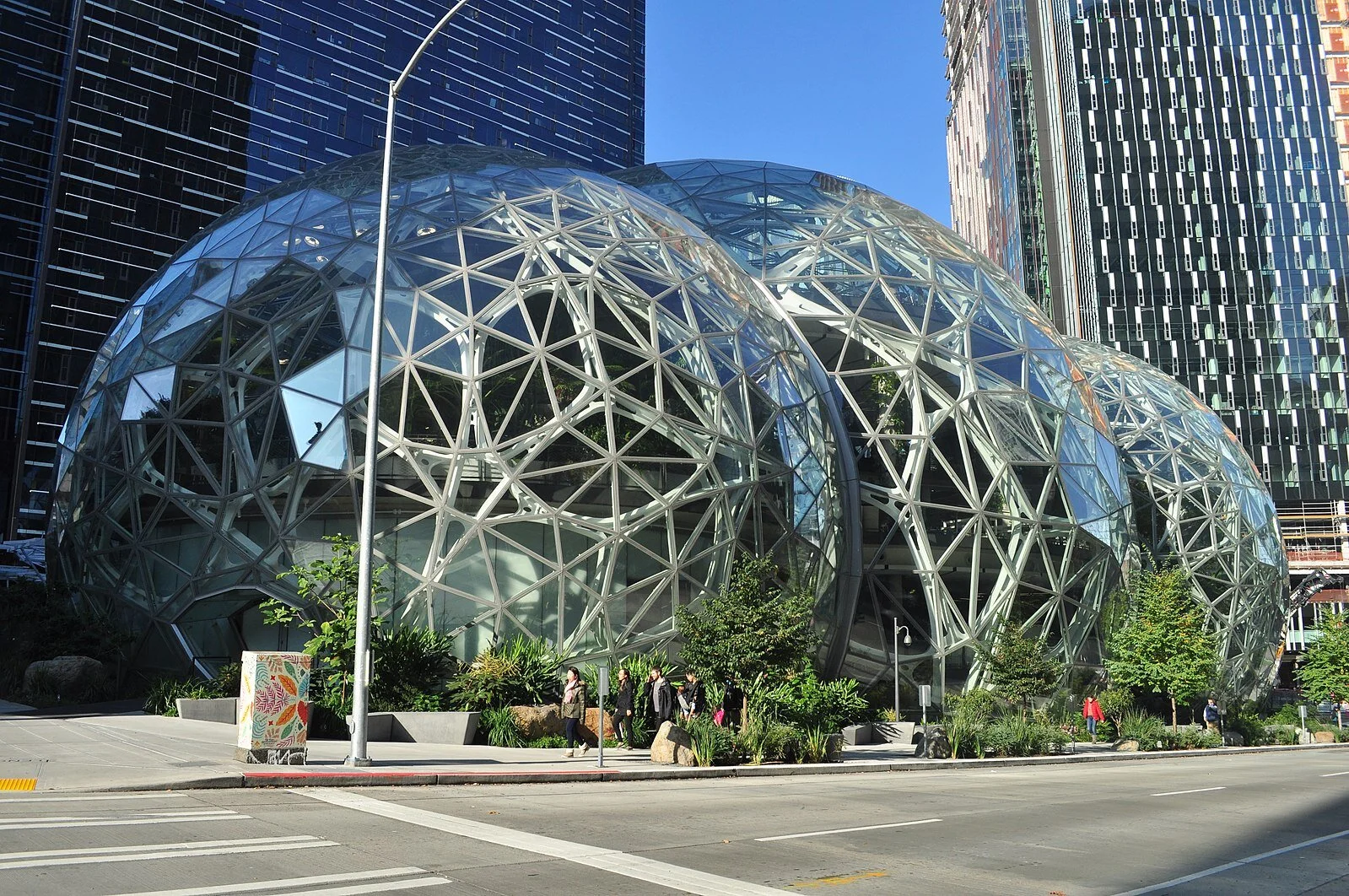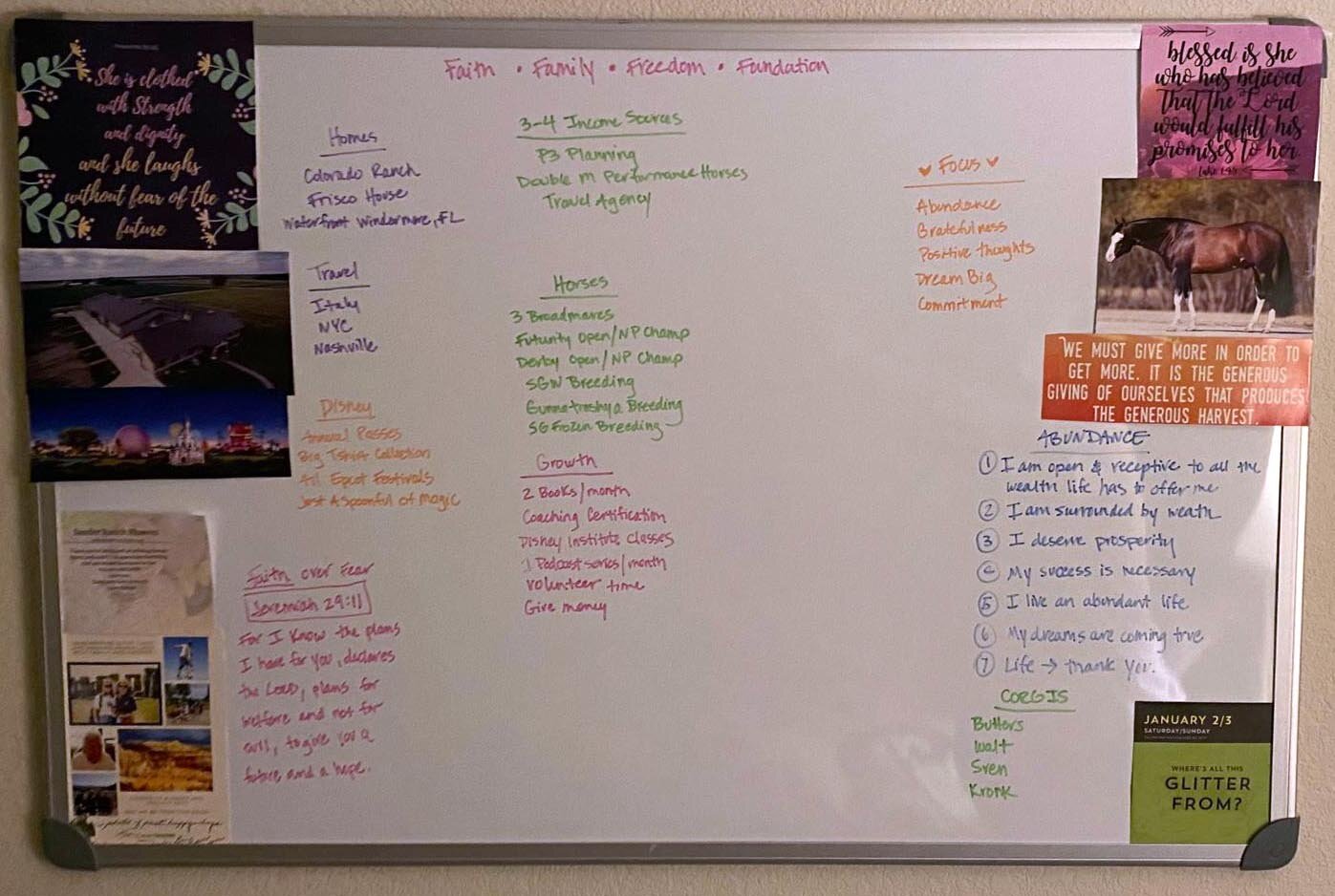The question of what makes a great leader has long been a focus of PFD Group’s coaching and strategic planning services, as great leaders build and leverage great communities. Among other things, a great community can help leaders learn more about themselves, which can help them build and grow better businesses.
Capturing the Momentum of the Economic Recovery: Accelerate Your Growth in the Second Half of 2021
If you are a business leader, you are likely still experiencing the lingering effects and stress of the global pandemic. You might be facing supply shortages, a reduced pipeline, and staffing shortages, as well as lingering doubts from the challenges you have endured from the last year. This being said, you also likely know that the economy is recovering – spending is increasing, unemployment is dropping, and by the end of the year, the gross domestic product is even projected to reach, at least temporarily, the path that was projected for it had the pandemic never happened.
Now, as a leader of your company, you might be in a rather challenging position. For over a year, you had to firefight – dealing with an unpredictable market in a time of international uncertainty, while also taking care of the people you employ and in your community. Now, to scale your business and capitalize on the economic recovery, you must switch mentalities – from surviving to thriving. While this might sound challenging, we have three tips on actions you can take to put yourself in the right headspace for growth in the second half of 2021.
Align to a Mission
First, to get out of your head, we recommend that you focus on something that is bigger than yourself. At PFD, we are deeply passionate about the profound importance of having a vision and mission for your life and company, how they can clarify your thinking, and get you out of daily firefighting. By creating or reconnecting with a mission and vision for your company and your life, you can become inspired again – aligning toward where you would like to be long-term, and taking steps to get there. This can be an effective way to fight against burnout and reignite passion. If you would like to learn more about creating an effective vision and purpose for your company, check out the blog post here.
Get the Right People
Getting the right people into your organization can be the greatest opportunity and the greatest challenge that you face. On one hand, with unemployment decreasing, the market is getting more competitive to find great talent, but on the other, having the right people in the right roles will be transformational for your organization. Often, to get the right people, you have to be creative. To create a creative sourcing plan, take fifteen minutes to consider the questions below to identify potential sources of talent that fit your company culture:
Who do you need to talk to at your local Universities or Community Colleges?
Are there nonprofits aligned with your mission whose board you need to be on?
Are there major community events that you need to chair or be on the planning committee for?
Are there other well-run organizations whose leaders you need to partner with?
Who are the five most influential people in your industry that you should talk to?
Who are the five most influential people in your community that you should talk to?
Who do you need to buy lunch?
Focus on what you can control
Finally, while there is a lot about our businesses that are not directly in our control, like supply chains and sales pipelines, we suggest that you focus on what you can control. It is a simple concept - easier said than done. We have found that there are two things senior teams can do that will set you up for growth in the latter half of 2021.
Cultivate Operational Excellence
If your pipeline is slow at the moment, perhaps you can use this season where you are less busy to cultivate operational excellence in your organization. Perhaps this means you roll out a new project management software, or any other software you have been avoiding putting into your organization because of the length of time it will take to install. Perhaps you update employee manuals, get the team into an online dashboard, or cultivate a coaching rhythm that allows you to coach your team candidly and consistently for success. Whatever the case, use this time to intentionally work on your operations so that you and your team have the capacity for growth later in the year.
Conduct Senior Leader Planning Sessions
Having the right people in the right roles on your team is critical for success. These are the people, if they are A Players, that will come up with creative solutions for challenges and help reignite passion among your other senior team members. Having the right people in these key roles, and actively communicating with these people via senior leader planning sessions, will take pressure off you as the CEO and lead to better outcomes overall.
With the economic recovery already happening, right now is when we need to invest time and energy to transforming our mindset and business to scale. If you would like to inquire about senior planning sessions, please contact us here.
It’s Time to Strategize Self-Care. Your Leadership depends on it.
We are living in an era where stress is the norm. At PFD, we recognize that there are numerous stressors in our own lives, including but not limited to political, social, and cultural upheaval, the continued economic hardship, as well as our own individual challenges. At PFD, we are also deeply saddened by the terrible acts of violence that have happened across the country, as well as in our own community in Boulder, Colorado. To add extra pressure, we know business leaders feel continual and immense pressure to lead well in order to be able take care of the people they employ, as well as the broader community. These stressors accumulate fast – in the past couple of months, 84% of adults said they experienced at least one emotion tied to prolonged stress – like anxiety (at 47%) sadness (at 44%) and anger (at 39%). Further, 67% of people in the United States said that the challenges they face are overwhelming. There’s no way around it – we are facing an inordinate number of stressors that affect our ability to lead and live stable, healthy lives.
As leaders, we are also prone to sacrificing our mental and emotional well-being to try to serve those around us. We do this because we know what’s at stake – we put in the extra hours and take the personal sacrifice to protect our team. While this quality is admirable, we are at risk for depleting our time and energy at unsustainable rates. We know that we cannot to pour from an empty cup, without taking time and refill it. In the past year, we have gone through so much, collectively and individually. This being said, there are definitive ways that we can refill and rejuvenate ourselves to be able to bring our best selves to our leadership positions.
Plan on sleeping
A third of your day should be dedicated to resting. It may sound simple, but we often neglect our sleep in favor of other activities; however, sleep is extraordinarily important. Consider these facts:
Good sleep can improve concentration and productivity
Sleep is important to regulating mental wellness. Mental health issues, like depression are strongly linked to poor sleep quality and sleeping disorders.
Sleep is important to regulating health. Poor sleep is linked to increased inflammation (like Chron’s disease), a greater risk of heart disease and stroke, and even a greater risk for type 2 diabetes.
Sleep is important to your emotional and social interactions –poor sleep can reduce your social skills and ability to recognize emotional expressions in others.
Try these strategies for setting yourself up to sleep well:
Go to sleep and get up at the same time every day – this will help set your body’s circadian rhythm.
Control your technology and light exposure. Using bright screens within 1-2 hours of your bedtime, can negatively impact your ability to fall asleep
Exercise during the day – even light exercise can improve sleep quality
Be mindful about what you eat and drink – caffeine, nicotine and alcohol, sugary foods, as well as eating big meals before bedtime can all disrupt sleep
Wind down at night. Creating a nighttime routine can help you calm down at night more effectively.
Create mindfulness around media consumption
We as people tend to have a desire to be informed. When we turn to the news or our social media feeds, we are tuning into the lives of the people we care about or admire, or the major events in our community and the world at large. This is not inherently a bad thing, but it doesn’t take an expert to understand that an excess of media is detrimental. For several years now, we have been coming to understand the adverse impacts of social media, in that it is deliberately designed to be addictive, with features like the ‘like’ button, consistent alerts, and the ‘infinite scroll’, and heavy social media use is linked to increased stress, anxiety, depression, isolation, and feelings of loneliness. Similarly, constant access to negative and alarmist news media can take a similar toll. When our bodies sense a threat, our brain activates our flight or fight response – even if the threat is being relayed to us through our televisions and news applications. Consuming news can cause our brains to release stress hormones, like cortisol and adrenaline, and prolonged exposure can lead to an increase in fatigue, anxiety, depression, and sleep loss.
Because we should be informed, but overconsumption can cause harm, we should employ strategies to moderate our exposure to media. These strategies could be:
Limit your time on news each day. Rather than having the news be background noise, take no more than 30 minutes each day to catch up with what has been happening in the media and on social media.
Create list of “purposes” around your different media outlets. When you define a purpose for each piece of media, limit your consumption of that media to that purpose. If your main goal for using Facebook is to catch up with close friends and family, edit your notification settings to just to see when they post, rather than aimlessly scrolling around the site. If your main goal for going to a news site is to get business-related news and economic forecasts, but you find yourself mindlessly frequenting the celebrity gossip columns, create the intention to change your consumption habits.
Acknowledge your emotions when consuming media. If you are feeling particularly pessimistic or angry one day, it might be a better strategy to avoid the news that day.
Subscribe to a reputable newsletter or podcast. Rather than flipping through different news channels and sites, a newsletter or podcast that summarizes the large news stories for that day inherently limits your time and contact.
Do something healthy after you watch the news. Because the news can be a stressor, following your news consumption with healthy action can reduce your stress and the adverse impacts of the news. These activities could be exercising, taking a walk, talking to a friend, or working on a hobby.
Schedule your routines
At PFD, we are proponents of routine. As leaders, we often face unpredictable situations that require creative action and solutions. Because these situations can be energy-depleting, we encourage you to create structure in your day to replenish your energy and mental wellness. Routines have been linked to better stress levels, sleep, health, and self-esteem.
Try these strategies to improve routine in your life:
Write out the specific steps in your routine and schedule those routines in your day. By writing down the steps, you are taking the first steps to making these routines an actionable part of your day.
Begin your day with an intentional routine. For more information on an effective routine that sets the tone of your day, check out this blog.
Make sure you include getting outside and exercise into your routines. These activities have been linked to decreased stress and overall improved health, and are therefore crucial to maintaining resiliency in our lives.
Cultivate mindfulness as a part of your routine. Taking time out of your day to meditate or engage in another mindfulness activity can help relieve stress and improve focus and productivity.
In a world of continued stress, it is crucial we continue to engage in self-care activities so we have the bandwidth to lead our teams and communities well.
What Should Your Office Look Like? Creating a Workspace that Promotes Wellness and Productivity
We often underestimate just how much our physical environment impacts us, but it impacts us immensely. Many of us have been working at home lately, and for a few of us, it improved our productivity, but for the vast majority of us, it made it much harder to work the hours that we were used to. The average person will work 90,000 hours in their lifetime. That’s a lot of time to be spending in a space that is dull, cluttered, dark or nondescript. The spaces that we exist in affect our health and our ability to perform, and while we like to deny this fact for the sake of cutting costs in our business, we do intuitively know this to be true. We’ve been in spaces that are like a breath of fresh air – perhaps they have exposed brick, high ceilings, and plants everywhere, and they genuinely feel nice to go into. Conversely, we’ve been in spaces that are overwhelming and stress us out – they are filled with clutter, unkempt, and with little natural light. If we were trying to work long-term in the second space, we would feel more exhausted, less creative, less satisfied and less motivated. Our spaces should energize us, inspire us, and motivate us and our employees. So, as we get back to our offices when it’s safe to do so, it might be a worthwhile endeavor to upgrade our spaces to this end.
What would it look like to be able to step into your workspace and immediately know what kind of culture you have? Likely, if you have never considered this question, your environment is affecting your culture, you just haven’t put much thought into how. This isn’t to say that you necessarily have a bad culture if your workspace is uninspiring but think of how much better your culture could be if your employees were excited just to exist in your office each day because your company put some thought into how it looks and feels. When we get our office spaces right, we can only add to and show off our culture and company.
Consider a case study from one of our clients - Evergent - and their office in Hyderabad, India.
They hired a top interior design firm Zyeta to transform a new, gorgeous 36,000 square foot office to emphasize employee health, collaboration and creativity. Now, when you walk into the Evergent office, you’ll see a clean, organized, naturally lit and modern space, with brightly colored furniture, numerous plants, and different textures on the walls to add subtle visual interest. You’ll see giant, inspiring quotes that emphasize their creativity and global reach, ergonomically-focused furniture, and community spaces that allow for gathering – both in a work setting and on breaks. One of the things that Evergent wanted to emphasize was transparency and accountability to foster their culture of excellence and teamwork, so they decided to make all of the meeting rooms have large class doors and walls so anyone could easily see inside. There are no secrets to what you are working on, and you can easily reach and collaborate with all of the other people you could need.
The Evergent office is made complete with a gym, and foosball and ping-pong tables. The office is so beautiful, that it has been toured by other big tech companies for them to get ideas on how they can improve their own spaces. Best of all, this new office reflects Evergent’s brilliant and colorful culture, and holds central the well-being and thriving of their employees. Now, when new hires enter the building to begin their two-week onboarding process, they enter into a space that shows just how much Evergent cares about them and their success.
Now, when we think of incredible office design, we tend to think that considerations for the office are reserved for only the bigger companies, because we tend to believe that it is out of our budget or expertise. Perhaps we are going to the wrong places for inspiration. When we think of office interior design, we think of tech companies with slides between the floors of the office or a rock-climbing gym, or creative agencies with beer on tap in the kitchen. What we should know is that having foosball tables or treadmill desks is not a prerequisite to creating an office that is inspiring – and we should invest in beautiful and functional working spaces regardless of the industry we are in. Now, I am not a designer, nor should I be. I have created my fair share of unstylish places, and there are plenty of books you can read on office design from experts that are far more talented than me in this area. This being said, below are some considerations that I have found should be taken into consideration when you transform your working environment for your employees.
1. Your environment should have what you need
The first thing we need to consider is this question: do we have what we need to do our jobs? Our office design should, first and foremost, be functional. Our employees should have the right tools in the right space to be able to get their work done. When I was early in my career, working as an internship, nothing drove me crazier when I was given old, outdated equipment that would impede my ability to get tasks done. Make sure your employees have the right equipment to be able to do their tasks. If you have to do a lot of brainstorming and whiteboarding, make sure you have whiteboards throughout your office. If you have creatives who need to share their work with others, make sure you have TVs in the meeting rooms that they can connect to gather feedback. If you have a manufacturing facility, make sure your equipment is optimized for production and safety. If you need people to collaborate, have an open floor plan. If you need people to go and do deep work by themselves, have offices with walls. If you need both, have a combination of an open floor plan with smaller offices with walls. If you need an agility and flexibility, build that into your workspace with moveable tables and chairs on wheels. The needs you have for your business should be held central to your considerations when creating an office.
2. Your environment should inspire you.
These next questions might seem obvious, but it is often overlooked when it comes to designing the office, and that is: What sort of spaces inspire you? Where do you get your best work done? While the idea is to create an office that is inspiring to everyone, you as the CEO lead and set the culture of your workspace, so your spaces should speak to you. Really consider these questions, and don’t answer them in a way that you think you should but aren’t actually reflective of where you are at. If you would do better in a cozy space with lower ceilings and a large armchair over an open-concept floor plan, take that into consideration. Take a look at these couple unconventional working spaces:
My “office” on an airplane - picture taken before the global pandemic
For me, where I absolutely get my best work done is sitting on an airplane. No kidding – for me, there’s something magical about being suspended 30,000 feet in the air, looking down at the earth below me. When I get on a flight, I am flooded with ideas and energy to tackle those ideas. Travel in general absolutely inspires me, so on years that aren’t affected by a pandemic, I would sometimes take day trips to work on my business and our strategic direction. On these days, I would get up early and head to the Denver International Airport, and I’d be in a new city by noon, where I’d spend some time, and be back home that night. I’d also travel to run our client offsites, so I’d spend quite a bit of time in the best office I could possibly have, where I am traveling at 500 knots and my desk is a tray table. These days and investment in travel are a reliably some of the best uses of my time - I’ll come up with ideas that I could have never done sitting back at home. What does this mean for our office that is headquartered in Colorado? First, I let some of my design-minded employees who spend more time in it than me optimize it for their needs. Second, our office is travel-inspired. We have numerous pictures on our walls from the international places that we’ve gone and the people we met while we were there. These people, places, and cultures are consistent reminders of why we do what we do – to steward a movement, no matter where you are born, anything is possible. We are on a global mission to empower workplaces to create opportunities of thriving and upward mobility for everyone. Whether I am soaring 30,000 feet high in an aircraft, or I am in an office in the mile-high city, I am reminded of that, and I am inspired.
Bob Goff, working on Tom Sawyer Island, picture taken from his Twitter.
When I think of another unconventional office space, I immediately think of Bob Goff, New York Times Best Seller and founder of the Love Does, an organization that fights for human rights and education for children in conflict zones. In his book with the same name as his organization, Bob revealed he had a rather unusual office: he worked out of Tom Sawyer Island at Disneyland. He started there when he was a lawyer and law professor, worked there, and held office hours there for his students. While Disney may not have recognized Tom Sawyer Island as officially Bob’s office, working out of that particular little corner of Disneyland really works for him. Bob has an unusually attuned sense of whimsy, and he found it to be particularly inspiring – where he could reflect and understand who he was created to be and work accordingly.
With these two unconventional examples, this is to say, figure out what inspires you, and really run with it and incorporate it into your office space and design. As CEO, you have a lot of control over your workplace culture. How you show up every day matters to the overall tone and feel of your company, so your space should give you energy and creative inspiration.
3. Your environment should be authentic to your company culture.
Our next consideration is a very important one, and that is: what is authentic to your company culture? If nobody in your company would honestly use a ping pong table in the break room, don’t waste your money in buying it. Dig into the culture you have, return to your foundational elements, like your core values and core purpose, and figure out the type of things to go into your space that would enhance that experience.
As an example, while I greatly admire Evergent’s decision to have all glass conference rooms or open spaces in their Hyderabad office, I would never make that decision for my own office. Why? Because one of our core values is “Be the Confidant” – At PFD Group, we nurture a culture of confidentiality, trust, and vulnerability. When our clients reach out to us, they share their greatest opportunities and challenges. There are highly sensitive and confidential conversations that I regularly have with my clients. It would be imprudent and thoughtless of me to not have at least one office with soundproofing and opaque walls and doors so I can have these sorts of conversations. This isn’t to knock on Evergent’s decision to have such a transparent office – for their culture and office needs, a transparent and open workspace is a highly strategic and effective choice. In fact, like them, we have meeting rooms that our team can gather and strategize. But unlike Evergent, we have to design our space to support our core value of “Be the Confidant”, and that is important to note.
4. Your environment should support health and wellness
When I first started my coaching practice, I had an office in a co-working space. It was a smaller office, without any windows to the outside, only to the rest of the building. It worked for what I needed. I didn’t find it to be particularly inspiring, but that was okay, because I didn’t spend much of my time in the office anyway. Since I do my best work when I travel, I was always taking meetings around town, flying on airplanes to offsites, so I really was only in the office for short periods of time. As my business grew, I hired an Executive Assistant named Emmalee, and, after a few months, we outgrew the little office in the co-working building. As we looked for new offices, Emmalee had one request: that it have a window with sunlight. Because I spent so much of my time out of the office, I hadn’t considered the necessity of a window. Emmalee was spending so much time in the darker office, that inevitably, by 3:00pm each day, she felt drained and sluggish, even though she genuinely enjoyed her work and was learning a lot. When we moved offices, we got a space with a huge window overlooking the front range of the Rocky Mountains. With this change to our space, Emmalee reported that the days felt much shorter, and she remained energized and motivated throughout, increasing her productivity and capability. In fact, she is now no longer my executive assistant, but she heads up our marketing and client education efforts. To have such an office was undoubtedly a worthwhile investment.
There are many things we could consider when creating health in our working environment, but I want to focus on a couple of key elements that I believe should be in all offices. The first, is making sure we have the right layout and furniture to encourage health, whether this be through buying ergonomic furniture, or creating an office layout that encourages people to walk throughout the day. The second is to make sure we have elements of nature in our offices –through sunlight and plants. There are ample studies that show that having plants incorporated into our working spaces not only improve our mental and physical well-being, but they also boost our productivity. Natural light stimulates human metabolism and regulates blood pressure, while artificial light induces fatigue.
One shot of the inside of Amazon’s Seattle Spheres. For more information, head to https://www.seattlespheres.com/
Large companies like Amazon are starting to understand this, making huge investments in creating sunny and plant-filled offices to give them a creative edge. The best example of Amazon’s work in this this called the spheres located in Seattle. The building is comprised of three large spheres, with glass to let natural light in, and more than 40,000 plants. Why did they invest all of this time and money? They recognize that people think and work differently when surrounded by plants.
My wife Kate’s family used to own a particularly special and inspiring space called Caribou Ranch. It was a recording studio built out of a converted barn in the Rocky Mountains near Nederland Colorado. Before a fire burned it down it 1985, it was an iconic recording studio. Famous bands and artists like Elton John, Michael Jackson, Earth Wind & Fire, Chicago, Stevie Wonder and Amy Grant recorded there, and many of the albums and songs went platinum and won Grammys. Elton John even named one of his albums that he recorded there “Caribou”. Kate’s family knew there was something special about bringing talented people to a place where trees and mountains loomed overhead. Going there is like a breath of fresh air, where you could get needed reprieve and clear your head to do your best creative work.
While you might not be able to create a near-biodome in the heart of Seattle or build a mountain campus, you can still incorporate plants and greenery into your spaces, and I encourage it. In your office designs, make the investment of cultivating health. Not only give your employees a chance to have good furniture and to walk around, but also make sunlight and nature (like plants) be a central part of your office design. Your employees will be happier, healthier, more satisfied with their jobs, more productive, and more likely to produce their best creative work.
5. You can make small changes over time that add up to a cohesive design goal.
If you don’t have the budget, these changes to your space don’t have to be made overnight. It is okay to slowly build a cohesive and beautiful office space over time – to prioritize the highest-leverage design elements and save the rest for when you have the budget and cash and buy other pieces later. Perhaps one quarter you will invest in whiteboards and a TV in your war room, and another quarter you will replace the desks, tables, and chairs. The important thing is that you make progress to bettering your space and culture. Small changes that you are making to create a better your space will still contribute positively to your employee experience. If you were to build slowly, make sure you have a plan for your needs and your space, so you don’t waste money on furniture or items that don’t match what you functionally need, or undercuts the design at a later point.
At PFD, as we have been building our coaching practice, we have prioritized different office design needs over time. In one iteration of our office (Q3 2019), we prioritized the creation of a War Room, so our strategy was highly visible. War Rooms can get messy-looking, which can undermine their functionality, so we used acrylic sheets as a design solution. The acrylic sheets anchored the War Room materials, giving it a clean, cohesive look, while also providing the functionality of a dry-erase board that allowed for the war room to be routinely updated.
6. If you don’t have the design talent to pull this off, find someone who does!
What if you’re like me, and you don’t have the design skillset to create an amazing office space? Like Evergent, you could get a professional interior design firm to come in, and create a beautiful office that is perfectly tailored to your needs. While, as CEO, you are in charge of the overall culture and employee experience, you don’t need to be and shouldn’t be personally in charge of every little detail. It’s okay to hire the right people to overhaul your environment. What if you have the resources to buy new furniture, but not necessarily to hire an entire interior design firm? That’s okay – having a great looking office space is still possible for you and your employees! If you don’t have the skillset, find someone who does! Perhaps one of your current employees would be interested in self-teaching interior design and would be happy to take on your working environment as a special project. That’s what happened for me - several of my employees have been quite happy to take over our interior design. Perhaps you could go to your local college’s design school and find an intern who would vastly benefit from having an entire office that they conceptualized and put together on their portfolio. Perhaps your spouse has a talented friend who just had a baby and is looking for a flexible gig while they raise their child. Whoever you hire to get the job done, just make sure they have context into your culture, needs, sources of inspiration, and elements that support health, like sunlight and plants. The possibilities are endless, it just takes some creativity into finding the right people to making it happen.
A suggestion: take some time (10-30 minutes) to brainstorm to truly consider your working environment and and write down:
What would it look like to be able to step into your workspace and immediately know what kind of culture you have?
In your current office space, does everyone have what we need to do their jobs? If not, what’s missing?
What sort of spaces inspire you? Where do you get your best work done? How could you incorporate what inspires you into your current space?
When it comes to working spaces, what is authentic to your company culture? What do your employees enjoy doing? What do you value, and what might it look like to incorporate what you value into your design?
Do you have any sunlight or plants in your office? Do you have opportunities for your employees to move around or sit in ergonomic furniture? If the answer is no, what do you need to do to incorporate these elements into your workspace?
Who do you need to make this possible? If it is not you, what can you feasibly do to get the right people to transform your workspace?
What are you doing to make your home work space inspiring until you can get safely back to the office? Do you have plants? Ergonomic furniture? A standing desk? Are you going for walks frequently?
Vision Boarding: Creating Your Future and Your Personal Why
There is no correct time to invest in personal growth, but the beginning of each year is always a motivator for people to lay out big plans for their personal life. Here at PFD, we encourage companies to have a BHAG (Big Hairy Audacious Goal), 3HAG, and 1HAG, but we are also working on our personal Vision Boards (VB).
A Vision Board is your personal WHY.
That feeling of being overwhelmed or feeling like you are on a hamster wheel is taxing on your mental and physical health. A VB is a fabulous tool to keep you motivated and focused, which is enormously important as we all continue to face uncertain times.
My (Liz Kaufman’s) Vision Board - Pictures on a useable whiteboard. It has some visual elements with a focus on functionality, as I wanted the ability to regularly update it with words that are inspiring to me.
Whether you have built a VB in the past or if this is your first time, we have some advice on how to get started:
Know What You Want
Most advice with regards to building a VB includes, “if you have no time or money limitations, what do you want”. This advice is exactly what is needed, but can be overwhelming, therefore we have two activities to help:
MY 75 – Taking the advice of no limitations due to time, money, or circumstances, list 75 things you want and want to achieve. Do not overthink this activity, just begin listing your hearts’ desires. Here are a few questions to help you get started:
Where do you want to go?
Who do you want to meet?
What do you want to read and/or learn?
Who do you want to help?
What is the newest gadget that makes you excited?
What relationships would you like to grow?
I AM statements – This activity is used by many personal growth coaches. When you write down “I AM” statements, it helps you actualize who you want to become. This is about your heart, mind, and soul. Words are the building blocks of your life, so ensure you are speaking positive words about yourself. Here are a few statements to help you get started:
I am generous with my money and time
I am respected within my care
I am part of a caring and loving family
I am an entrepreneur
I am confident
I am a home owner
Emmalee Harper’s Vision Board. It is made on two acrylic sheets sandwiched together, with printed pictures in between. It is highly visual and design-focused, with some added functionality of being able to write on it with a dry-erase marker.
Build Your Vision Board
There is no right or wrong way to build your VB. There are only two qualifications; it should fit your personality/style and you should be able to see it daily. Here are a few ideas:
Materials
All you need is a blank wall, some pictures, paper, and tape, however, there are many examples of materials that can build a Vision Board that will work for your space and personality. A few ideas include:
Corkboard
Whiteboard
Acrylic Board (following this tutorial)
Canvas
Blank wall
Window
Style
Whether it be highly stylized or simple, it should be both functional and energizing. At PFD we have three examples of styles that you’ll see throughout this post:
My (Liz’s) Vision Board - Pictures on a useable whiteboard. It has some visual elements with a focus on functionality, as I wanted the ability to regularly update it with words that are inspiring to me.
Emmalee Harper’s Vision Board – It is made on two acrylic sheets sandwiched together, with printed pictures in between. It is highly visual and design-focused, with added some functionality of being able to write on it with a dry-erase marker. She also added some gold leaf to the pictures as an extra, fun touch.
Ethan Martin’s Vision Board - Magazine clippings on canvas. It is highly visual, comprised of inspiring pictures and quotes.
Content
You do not need to include everything from you, MY 75 or I AM statements, but ensure your board is a mix of categories, personal growth, inspirational quotes, huge aspirations that scare you, short term wins that will energize you, and anything else that speaks to you. This board is YOU poured out into a visualization; it is not supposed to speak to someone else.
Ethan Martin’s Vision Board - Magazine clippings on canvas. It is highly visual, comprised of inspiring pictures and quotes.
Keep Your Board Fresh
As you achieve a win, first celebrate it, then replace it with a new goal (which is why you developed a My 75 and I AM statements). Adding to it often helps you to work on your future and refine the view of your life. Some areas may come into deeper clarity, while others may stay the same for a year and get moved to the next year. Your VB is always a work in progress.
The last piece of advice is, get started. Create a grand vision for your life and speak it into existence each day. Though it may seem simple, this is a powerful tool. The PFD Team is here to help and we encourage you to share your Vision Boards, and we will be sharing ours.
